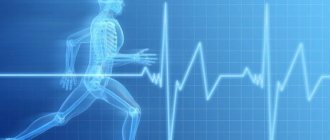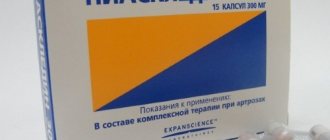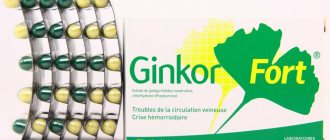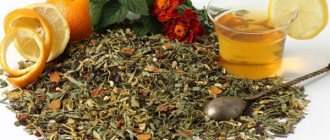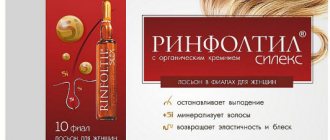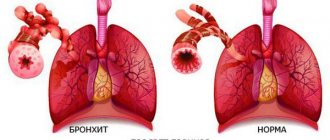Withdrawal syndrome in alcoholism is a very serious condition, which is usually accompanied by severe attacks of pain. In this case, a person often lashes out at loved ones and even raises his hand to them. To alleviate the patient’s situation, the doctor prescribes special medicinal formulations that can improve the condition and relieve pain. The drug "Proproten 100" is a homeopathic remedy that has practically no analogues, but it is considered one of the best, according to narcologists.
Pharmacodynamics and pharmacokinetics
When treated with Proproten-100, of the S-100 protein is modified , which couples metabolic and information processes in the brain. In addition, the synthesis of the neuronal membrane is normalized, modulating the synaptic plasticity of neurons. As a result, the functions of the brain structure are restored, the formation of alcohol dependence , the hypothalamus, and other things is eliminated. In patients suffering from alcohol dependence, the effect on positive emotional reinforcement is normalized, leading to a decrease in the frequency of self-stimulation of the lateral hypothalamus.
The activity of hippocampal neurons also decreases, the number of circulating immune complexes in the peripheral blood decreases, and a correlating decrease in ethanol consumption is noted. Taking Proproten-100 enhances the inhibitory effects of GABA in the central nervous system, restores neurotransmitter balance and conditioned reflex functions . At the same time, the brain's resistance to toxic influences and hypoxia .
Thus, treatment with this drug helps alleviate psychopathological disorders, for example: anxiety, mental stress, insomnia, irritability, anxiety, low mood, strong craving for alcohol . Therapy also allows you to reduce or completely eliminate somatovegetative disorders , manifested by: weakness, sweating, headaches, tremors, tachycardia, and digestive disorders . This drug is actively used to reduce or eliminate the symptoms of alcoholic “hangover” syndrome .
The anti-alcohol effect of the drug was also noted, reducing the craving for alcohol and reducing the likelihood of relapse.
Compound
"Proproten 100" is available in two forms: tablets and drops. The tablets have a white or soft cream color, their shape resembles a flat cylinder with a chamfer and a notch, the structure is uniform with a smooth surface. On the side with the dividing line you can see the inscription MATERIA MEDICA, and on the reverse - PROPROTEN 100.
If you study the composition of the drug "Proproten 100", then the tablets contain antibodies to the brain-specific protein S-100, as well as lactose monohydrate, MCC and magnesium stearate.
And the drops are a colorless liquid with a characteristic odor of alcohol. The dropper bottle contains 25 ml of the product.
Proproten 100: instructions for use (Method and dosage)
This medicine is intended to be taken orally, separately from food. The drug is prescribed in tablets one at a time, and drops 10 drops per single dose. It is recommended to keep the tablets in your mouth until they completely dissolve.
To relieve a hangover, the medicine must be taken every 30 minutes. in the prescribed single dosage.
For patients taking Proproten-100 drops, the instructions for the drug recommend that when sleep sets in, they resume taking it immediately after waking up. If a worsening of alcohol withdrawal symptoms is noted, then it is necessary to supplement treatment with other drugs that are usually used in detoxification.
When carrying out relapse prevention, it is assumed to take a single dosage of the drug of any form, 1-2 doses per day, for 2-3 months. Accidental consumption of alcohol requires an additional dose of double dosage 2 times a day.
ProstaNorma® contains plant extracts that have both prostatotropic activity and improve microcirculatory processes in the prostate gland, enhance (normalize) urination, and have anti-inflammatory, capillary protective and antimicrobial effects. The specific pharmacological activity of ProstaNorma® is determined, first of all, by the presence in its composition of triterpene and flavonoid glycosides from licorice. Thus, it has been established that a decoction of peeled licorice roots has pronounced gonadotropic, androgenic and diuretic activity and is recommended for use for the prevention and treatment of prostatitis (Patent N 2058152 dated November 10, 1994). In addition, it has been shown that triterpenoids from licorice have antiallergic, antitoxic, hypocholesterolemic, antiradical, and flavonoids, in addition, also have antimicrobial and antioxidant properties (Vichkanova S.A., 1981; Bondarev A.M. et al., 1995; Takagi, 1969; Segal, 1970; Kenzo et al., 1989, Ju et al., 1990). Goldenrod herb extract is included in the preparations “Inconturin”, “Prostaforton”, “Antiprostin”, “Prostamed”, “Cefasabal” (Germany), used for prostatitis, prostate adenoma, bedwetting, cystitis (Lutomski et al., 1987) . The diuretic, anti-inflammatory and stone-dissolving effects of goldenrod are inherent in flavonoids from goldenrod (Batiuk V.S. et al., 1988). The activity of the flavonoid-containing plant St. John's wort is described in the previous section. Preparations of Echinacea purpurea, in particular the drug “Estifan” (dry extract of Echinacea herb), are used as immunostimulating agents (Sakovich G.S., Kolkhir V.K., 2001). They also exhibit androgenic and potency-improving activity.
Biochemical testing showed that ProstaNorm® in enzyme test systems had a direct effect on the activity of enzymes of antioxidant activity, NADPH oxidase, monooxygenase activity of cytochrome P450, which characterized it as a potential antimicrobial, immunostimulating, and detoxifying agent. Based on the above, the necessary studies were carried out to develop a drug for the treatment of chronic prostatitis.
ProstaNorm® was studied in the form of two preparations – ProstaNorm® liquid (PZh) and ProstaNorm® dry (PS) under the same experimental models. The specific activity for ProstaNorma® as a drug for the treatment of prostatitis should be its anti-inflammatory, capillary-protective, analgesic, diuretic, antimicrobial and androgenic activity.
Anti-inflammatory properties.
The anti-inflammatory effect of ProstaNorma® was studied with its single intragastric administration in doses of 0.2-0.6 ml/mouse, 0.5-2 ml/rat (PG) or 20-100 mg/kg (PS) in models of acute inflammatory edema of the posterior limbs in mice, and in a model of peritonitis in rats. It was established that ProstaNorm®, both in liquid and dry form, exhibits pronounced anti-inflammatory activity, which was expressed in a significant reduction by 15-50% in the amount of inflammatory exudate in the abdominal cavity in rats and the severity of formaldehyde and histamine edema of the extremities in mice compared to the control (Table. 19). The dose dependence of the effect was more clearly evident in the case of PS.
Angioprotective properties.
The capillary protective effect of ProstaNorma® was studied with its single intragastric administration in doses of 0.2-0.6 ml/mouse (PG) and 20-100 mg/kg (PS) in a model of increased vascular permeability of the skin in mice. Experimental studies have shown that ProstaNorm® has a pronounced capillary protective effect, significantly increasing the time of release of trypan blue into the inflammation site by 32-50% compared to the control (Table 19).
Table 1. Effect of ProstaNorma® on inflammatory edema of the extremities in mice, experimental peritonitis in rats and skin capillary permeability in mice
| Experience Option | Formalin edema, mg (% of control) | Histamine edema, mg (% of control) | Peritoneal exudate, ml (% of control) | Release time trypan blue, sec (% control) |
| Control | 60,6± 3,15 | 37,3± 2,96 | 1,93± 0,29 | 68,3± 5,9 |
| Pancreas, 0.2 ml/mouse | 60,6± 2,75 | 29,6± 1,76 (-21) | — | 91,6± 5,4*(+34) |
| Pancreas, 0.4 ml/mouse | 49,0± 3,97 (-19) | 26,8± 2,95 (-25) | — | 90,8± 2,4*(+32) |
| Pancreas, 0.6 ml/mouse | 46,4± 3,95*(-24) | 27,3± 2,36*(-27) | — | 100,0± 5,0**(+46) |
| Pancreas, 0.5 ml/rat | — | — | 1,64± 0,29 (-15) | — |
| Pancreas, 1.0 ml/rat | — | — | 1,54± 0,19 (-20) | — |
| Pancreas, 2.0 ml/rat | — | — | 0,97± 0,24*(-50) | — |
| Control | 71,0± 4,5 | 61,0± 1,75 | 1,75± 0,16 | 75,0± 2,23 |
| PS, 20 mg/kg | 58,3± 3,33 (-18) | 51,5± 1,8*(-16) | 1,33± 0,22 (-24) | 99,6± 1,05**(+33) |
| PS, 50 mg/kg | 54,2± 2,38*(-24) | 46,6± 2,47**(-24) | — | 103,3± 2,78**(+38) |
| PS, 100 mg/kg | 49,1± 2,39*(-31) | 33,3± 2,47**(-45) | 1,08± 0,19* (-38) | 112,1± 5,23**(+50) |
* or ** — significance of differences from control at p<0.05 or p<0.01
Analgesic properties.
The analgesic effect of ProstaNorma® was studied by determining the pain sensitivity threshold (PST) using the “hot plate” method, using models of “acetic acid writhing” in mice and “pressure on the paw” in rats. The mechanism of development of pain syndrome during thermal exposure includes an emotional reaction to pain (in this model of pain, central mechanisms play a leading role); when the abdominal cavity is irritated by acid, the humoral mechanisms of pain sensitivity come to the fore, and in the case of pressure on the paw, irritation of peripheral pain receptors. It was shown that under “hot plate” conditions, a single intragastric administration of prostanorm in doses of 20-50-100 mg/kg (PS) and 0.2-0.6 ml/mouse (RW) increased the PBC by 12-70% throughout three hours of experiment compared to the baseline (Table 20). In the case of pancreas, the analgesic effect increased with increasing dose. PS at doses of 50 and 100 mg/kg significantly reduced the number of writhing in mice by 18 and 25%, and at doses of 20 and 100 mg/kg it also significantly increased by 39 and 44% the ratio of PBC 60 minutes after drug administration (PBC60) to PBC to initial (PBChis) compared to control (Table 20). The results of studying the analgesic properties of Prostanorm using three experimental models indicate that the drug exhibits noticeable activity both in the conditions of models accompanied by an acute inflammatory process - the “hot plate” model and acetic acid “writhing” (consistent with the results of studying its anti-inflammatory properties), and and when acting on peripheral pain receptors. The data obtained indicate a certain universality of the analgesic effect of prostanorm on the body.
Table 2. Effect of ProstaNorm® on the pain sensitivity threshold (PST) in the “hot plate” and “vinegar writhing” models in mice, “pressure on the paw” in rats
Experience Option | "Hot Record" | "Writhing" | "Paw" | |||
| PBC,%, (initial –100%) after administration…. | Quantity% | PBCh60/PBChish, % | ||||
| 30 min | 60 min | 120 min | 180 min | |||
| Control | 116± 7 | 116± 6 | 117± 8 | 111± 8 | 100± 3 | 100± 7 |
| PS, 20 mg/kg | 158± 6** | 161± 7** | 152± 8* | 150± 9* | 88± 5 | 139± 6* |
| PS, 50 mg/kg | 146± 7* | 150± 8* | 150± 8* | 143± 10 | 82± 4* | — |
| PS, 100 mg/kg | 145± 7* | 149± 8* | 153± 7* | 149± 10* | 75± 5** | 144± 7** |
| Control | 94± 7 | 106± 8 | 88± 5 | 93± 5 | — | — |
| RV, 0.2 ml/m | 113± 7 | 121± 7 | 119± 6* | 124± 6* | — | — |
| RV, 0.6 ml/m | 153± 8** | 169± 7** | 171± 7** | 161± 6** | — | — |
* or ** — significance of differences from control at p<0.05 or p<0.01
Diuretic properties.
The diuretic effect of ProstaNorma® was studied with a single intragastric administration to rats at doses of 50 and 100 mg/kg (PS) and 1 ml/100 g rat weight (RW). ProstaNorm® significantly increased water load-stimulated diuresis in rats. In the case of PS, the effect increased with the dose of the drug: total (over 5 hours) diuresis increased from 43% (50 mg/kg) to 76% (100 mg/kg) compared to the control (Table 21).
Table 3. Effect of ProstaNorm® on diuresis in rats
| Index | Control | Pancreas, 1 ml/100g | PS, 50 mg/kg | PS, 100 mg/kg |
| Diuresis, ml/100 g, % of control | 2,95± 0,27 | 5,4± 0,32** +83,1 | 4,22± 0,16* +43,1 | 5,2± 0,17** +76,3 |
* or ** — significance of differences from control at p<0.05 or p<0.01
Gonadotropic and androgenic properties.
The purpose of studying the effect of ProstaNorma® on the sexual hormonal activity of rats was to identify the tropism of the drug to the genital organs. The gonadotropic activity of ProstaNorm® was studied when administered intragastrically for 10 days at a dose of 100 mg/kg (PS) and 10 ml/kg (PG) to infantile male rats (age 21-23 days). On day 11, the animals were killed with ether, the gonads, levator ani muscle, and pituitary gland were removed and their weight was determined. The administration of ProstaNorma® led to a significant increase in the weight of the seminal vesicles by 25 and 28% and the weight of the ventral prostate by 30 and 34% compared to the control (Table 22). The data obtained indicate the gonadotropic effect of ProstaNorma®. A slight increase in the levator ani muscle in experiments with the pancreas suggests that the drug has some anabolic properties.
The androgenic activity of ProstaNorma® was studied in gonadectomized infantile male rats. The drug was administered intragastrically in doses of 100 mg/kg (PG) and 10 ml/kg (PS) for 7 days, starting the next day after gonadectomy, against the background of testosterone propionate administration. It was found that under the conditions of this model, after the administration of ProstaNorma® at a dose of 100 mg/kg, the weight of the seminal vesicles significantly increased by 42% (PS) and 60% (PG) compared to the control (Table 22). The data obtained indicate the androgenic activity of the drug.
Table 4. Effect of ProstaNorm® on the weight of the gonads and organs of infantile and gonadectomized rats
Experience Option | Organ weight, increase in% to control | ||||
| Seminal vesicles | Ventral prostate | Testes | Pituitary | Levator ami muscle | |
| Infantile rats | |||||
| Pancreas, 10 ml/kg | +28* | +34* | +14 | +12 | +20* |
| PS, 100 mg/kg | +25* | +31* | +3 | +2 | +8 |
| Gonadectomized rats | |||||
| Pancreas, 10 ml/kg | +60** | +20 | — | — | +19* |
| PS, 100 mg/kg | +42** | +11 | — | — | +7 |
* or ** — significance of differences from control at p<0.05 or p<0.01
Antimicrobial properties.
The antimicrobial properties of ProstaNorma® dry have been studied in detail. As a result of studies of the effect of ProstaNorma® on clinical strains isolated from patients, including 46 strains of bacteria with a high degree of resistance to currently widely used antibiotics, and 5 strains of yeast-like fungi of the genus Candida, it was shown that gram-positive bacteria of the genus Staphylococcus
and Streptococcus (Enterococcus) were sensitive to the drug. Moreover, its inhibitory effect against drug-resistant bacteria was no lower than against antibiotic-sensitive strains of bacteria. The highest activity of ProstaNorma® was demonstrated against different types of staphylococcus (St. aureus, St. epidermidis, St. saprophyticus) and streptococcus (Str. fecalis, genus Enterococcus), which play an important role in the etiology of infectious and inflammatory nonspecific diseases of the prostate gland and urinary tract . At the same time, a very important fact has been established that ProstaNorm® does not suppress the growth of gram-negative bacteria of the genus Escherichia, which may have a positive effect in the clinical use of a drug that will not suppress the normal intestinal microflora.
Gastroprotective and hepatoprotective properties.
It is known that triterpene and flavonoid glycosides from licorice roots exhibit antiulcer activity, as well as flavonoids from the herb St. John's wort (Sokolov S.Ya., Zamotaev I.P., 1989; Mashkovsky M.D., 2000). Therefore, the study of the gastroprotective properties of ProstaNorma® was carried out in sufficient detail, using models of experimental gastric ulcers in rats of various origins: acute - ethanol, indomethacin and caused by pyloric ligation (Neck), chronic - caffeine-arsenic. The criteria for assessing the hepatoprotective effect of the drug were changes in the activity of liver enzymes of the cytochrome P450 monooxygenase system in a model of rat liver damage by a caffeine-arsenic mixture.
Intragastric administration of the drug to animals in doses of 10 ml/kg (PG) or 100 mg/kg (PS) before or against the background of ulcerogenic action) had a protective effect on the gastric mucosa of rats (Table 23). The most pronounced gastroprotective effect of the drug was manifested in models of ethanol ulcers and Neck ulcers. This was expressed in a 70 and 57% decrease in the number of “sick” rats, a 76-97% decrease in the frequency of formation and area of ulcerative defects, as well as a more than 10-fold decrease in the Pauls index compared to the control.
When studying the hepatoprotective effect of the pancreas, it was found that the activity of microsomal hydroxylation and demethylation enzymes, calculated for the molar concentration of cytochrome P450, in treated animals increases by 31 and 43%, respectively, compared to the control (Table 24). The positive effect of ProstaNorma® on the microsomal monooxygenase system of the liver of rats indicates the detoxifying and protective (hepatoprotective) effect of the drug on the liver. The results obtained are consistent with the data of in vitro biochemical testing.
Table 5. Effect of ProstaNorm® on experimental gastric ulcers in rats
Experience Option | Rats with ulcers,% | Degree of ulceration,% | Pauls index | Therapist. Effect | Area of ulcers,% | Pauls index | Therapist. Effect |
| Indomethacin ulcers | |||||||
| Control | 100 | 100± 13 | 14,5 | — | 100± 17 | 34,8 | — |
| Pancreas, 10ml/kg | 100 | 43± 10** | 6,2 | 2,3 | 12± 5* | 4,0 | 8,7 |
| Ethanol ulcers | |||||||
| Control | 100 | 100± 8 | 2,9 | — | 100± 4 | 34,1 | — |
| Pancreas, 10ml/kg | 28,8 | 24± 14** | 0,3 | 14,5 | 15± 6** | 1,4 | 24,4 |
| Ulcers caused by pyloric ligation | |||||||
| Control | 100 | 100± 27 | 19,2 | — | 100± 25 | 14,4 | — |
| Pancreas, 10ml/kg | 42,8 | 7± 15* | 0,6 | 3,2 | 3± 10* | 0,2 | 72,0 |
| Caffeine-arsenic ulcers | |||||||
| Control | 100 | 100± 27 | 7,4 | — | 100± 21 | 22,7 | — |
| Pancreas, 10ml/kg | 88,9 | 55± 21 | 3,6 | 2,0 | 56± 17 | 11,4 | 2,0 |
| PS, 100 mg/kg | 28,3 | 58± 16 | 1,1 | 6,0 | 6± 15* | 0,3 | 76,0 |
* or ** — significance of differences from control at p<0.05 or p<0.01
Table 6. Effect of ProstaNorma® (10 ml/kg) on the microsomal monooxygenase system of the liver of rats poisoned with a caffeine-arsenic mixture
| Experience Option | Cytochrome P450 content | Speed reaction | |||||
| nmol per ml | nmol per mg protein | Hydroxylation of aniline | N-demethylation of dimethylalanine | ||||
| nmol/min per mg protein | nmol/min per mg P450 | nmol/min per mg protein | nmol/min per mg P450 | ||||
| Control | 16,25± 0,02 | 0,65± 0,02 | 0,8± 0,02 | 1,23± 0,03 | 1,39± 0,06 | 2,14± 0,08 | |
| Experience | 15,3± 0,44 | 0,5± 0,01** | 0,59± 0,02** | 1,61± 0,01** | 1,12± 0,03* | 3,06± 0,01** | |
| Experience/control,% | 94 | 77 | 74 | 131 | 81 | 143 | |
* or ** — significance of differences from control at p<0.05 or p<0.01
Immunostimulating properties.
One of the components of ProstaNorma® is an extract of Echinacea purpurea, preparations from which are independently used in wide medical practice as immunostimulants, in particular the drug “Estifan” (Sakovich G.S., Kolkhir V.K., 2000). Therefore, it was of interest to conduct a comparative study of the immunotropic properties of both drugs. On the basis of the Research Center BMT VILAR, the effect of ProstaNorma® on the phagocytic activity of human polymorphonuclear leukocytes (PMNs) was assessed, in comparison with the effect of estifan, in in vitro experiments to enhance luminol-dependent chemiluminescence stimulated by opsonized zymosan. The study showed that pre-incubation of PMNs with ProstaNorm® or estifan (0.3 mg/ml) leads to an enhanced response to zymosan. This phenomenon is called prestimulation or priming. The prestimulation index, calculated based on experimental data, was maximum for ProstaNorm® - 166%. According to this indicator, ProstaNorm® was superior to estifan. Thus, the data obtained indicate the stimulating effect of ProstaNorma® on phagocytosis, and according to this parameter the drug can be characterized as an immunostimulant.
The presence of flavonoid fractions from St. John's wort in ProstaNorma® (its antidepressant properties are known - Gorkov V.A. et al., 2000) in combination with licorice triterpenoids can contribute to the manifestation of neurotropic activity by the drug. It was shown that ProstaNorm® (20 and 100 mg/kg, orally) exhibited stress-protective and antidepressant activity, having a positive effect on the behavior of rats in the Henderson Extrapolation Test and the Porsolt Behavioral Despair Test. In a model of hypoxic hypoxia with hypercapnia, the drug significantly increased (up to 30%) the resistance of rats to hypoxia, providing an antihypoxic effect.
Thus, ProstaNorm® in liquid and dry form has a complex of pharmacological properties that characterize it as a prostatotropic agent, the main ones of which are: anti-inflammatory, capillary protective, analgesic, diuretic, antimicrobial and androgenic. The presence of such a spectrum of pharmacological activity in the drug allowed us to hope for its beneficial therapeutic effect both in chronic nonspecific abacterial prostatitis and in prostatitis complicated by gram-positive antibiotic-resistant bacteria. The established neurotropic and immunostimulating properties of the drug can enhance the overall therapeutic effect for prostatitis. The pronounced gastroprotective properties of ProstaNorma® serve as an additional positive characteristic.
Safety study of ProstaNorma®.
The safety study of ProstaNorma® liquid and dry was carried out in accordance with the instructions of the “Guidelines for experimental (preclinical) study of new pharmacological substances (2000)”. According to the parameters of acute toxicity, the drug should be classified as class VI of relatively harmless drugs. In chronic experiments on rats (10-100 times the therapeutic dose) and 3-month experiments on dogs receiving PZh as a dosage form at a five-fold therapeutic dose, and PS, in the dosage form of a 0.2 g tablet, no changes in morphological and biochemical blood parameters, functional state of the cardiovascular and central nervous systems, liver and kidneys. This was confirmed by pathomorphological studies of the internal organs of animals. The drug did not have local irritation, allergenic, immunotoxic, embryotoxic properties, and did not affect the reproductive functions of experimental animals.
Analogs
Level 4 ATC code matches:
Antaxon
Metadoxyl
Antabuse
Vivitrol
Naltrexone
Medichronal
Disulfiram
Teturam
Colma
Lidevin
Esperal
The main analogue of this drug for the active substance is Tenoten.
Reviews about Proproten-100
It should be noted that this drug is rarely discussed online. At the same time, reviews of Proproten-100 are of a different nature. Particularly noteworthy are the published results of the study, where each form of the drug was used to treat different patients. Thus, reviews of Proproten-100 drops show that this dosage form has a faster effect. However, reviews of tablets contain information about almost the same effectiveness as drops.
If we consider the results in detail, then approximately 50% of patients note an improvement in their health, 40% noticed a slight positive effect, for 6% of those examined, treatment with Proproten-100 was useless.
According to experts, to reduce the craving for alcohol, the sincere desire of patients to get rid of this craving is of great importance. As for this drug, many people experience a positive effect, but additional enhanced therapy is often required.
Additional uses
According to reviews from those who have already managed to get rid of the addiction, the use of the drug “Proproten 100” for therapeutic purposes made it possible not only to eliminate the craving for alcohol, but also other symptoms that did not allow a person to lead a normal lifestyle. So, this medicine:
- reduces sweating;
- relieves nervous tremors and tremors of the limbs;
- increases performance;
- normalizes sleep;
- relieves depression;
- improves the patient's mood.
I would also like to say that treatment with the drug can be carried out without the knowledge of the patient. You just need to add it to liquid food or drink. “Proproten 100”, reviews from narcologists say this, gives good results in the treatment of patients who do not want to start therapy on their own, but still, if a person takes the drug consciously, the treatment results are much better.
Price Proproten-100, where to buy
In Russian pharmacies, the price of Proproten-100 drops varies between 190-250 rubles.
The price of Proproten-100 tablets is 100-270 rubles, depending on the number of tablets.
- Online pharmacies in RussiaRussia
- Online pharmacies in KazakhstanKazakhstan
ZdravCity
- Proproten-100 tablets homeopath.
40 pcs. Materia Medica LLC 306 rub. order - Proproten-100 drops for internal use. approx. 25ml Materia Medica LLC
RUB 335 order
- Proproten-100 tablets homeopath. 20 pcs. Materia Medica LLC
189 rub. order
show more
Contraindications and unwanted effects
Before you start taking the drug yourself, doctors advise you to still seek advice, because there are a number of contraindications, and everyone who is going to start therapy should know about them, especially if it is secret. The drug should not be taken by people in the following cases:
- while carrying a baby and while feeding it;
- patients with particular intolerance to the components included in its composition;
- if there is glucose malabsorption syndrome;
- congenital lactose deficiency was diagnosed.
It often happens that two drugs, even if they have the same effect, are incompatible with one another. There is no information in the instructions for the drug “Proproten 100” that it cannot be used in conjunction with any other drug.
As for the undesirable effects of using the product, these include the manifestation of an allergic reaction and short-term blurred vision, which can cause double vision within 5 minutes. Many people are interested in the cost of the drug “Proproten 100”. Its price may be different in each pharmacy. You can order medicine online.
